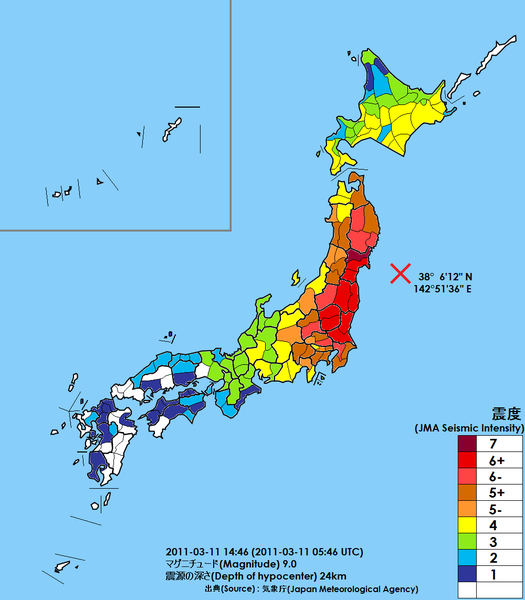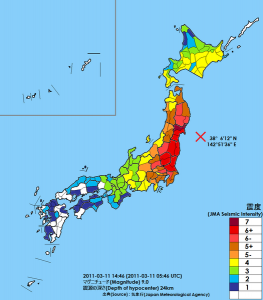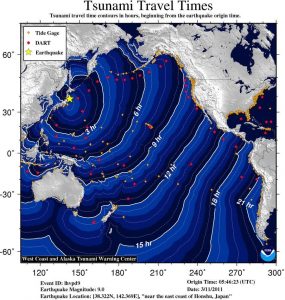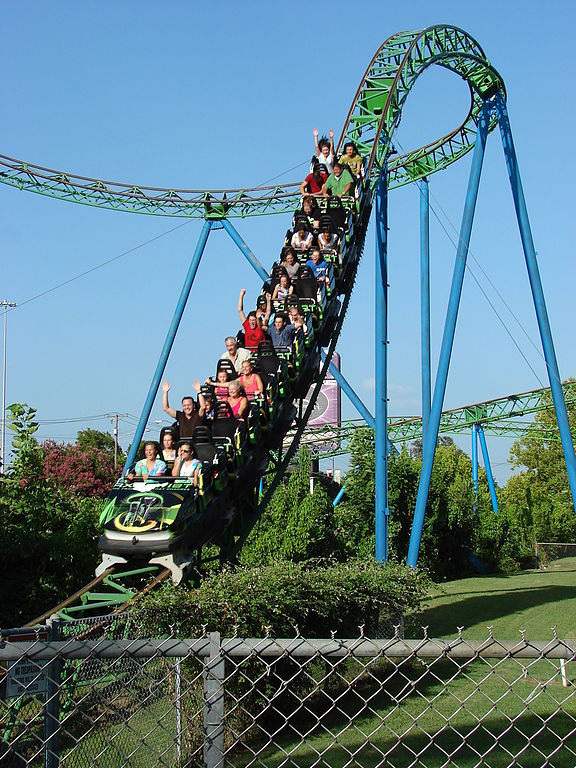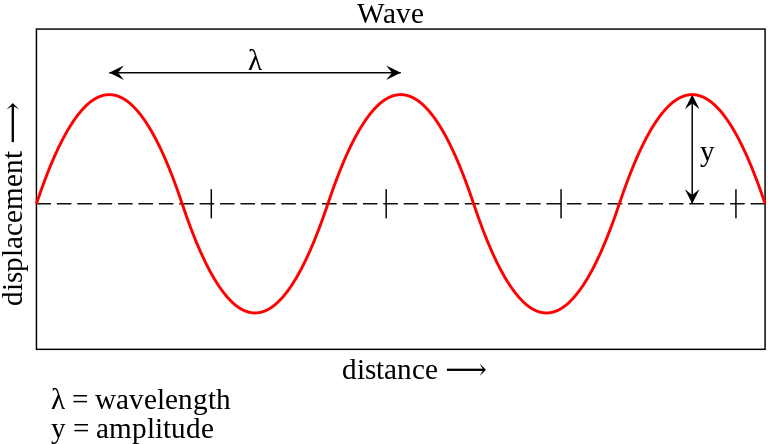Warm up
What is the name of the wave that was destructive after the Japanese earthquake? Are we at risk of a significant one if we have an earthquake on the San Andreas Fault?
Answer
There were two possible correct answers to this warm up:
(1) The Tsunami (a wave of ocean water) caused extreme damage to low-lying ares along the Japanese coast. At VHS, we are not at a significant tsunami at VHS because (a) Even through we are at a relatively low elevation, we are far from the ocean (the wave would have to come through the Golden Gate, then work its way up the Carquinez Straights, and (b) The San Andreas fault in California is a strike-slip fault, and these do not tend to cause large tsunamis.
(2) Some students answered the secondary wave, remembering that the primary waves tend to cause less damage than the primary waves. We are at risk of damage from secondary waves from earthquakes at VHS, but not nearly as much since we are further away from the fault.
Class work
Review earthquake/tsunami worksheet. Make sure you turn them in if you did not give to sum.
Note: The Richter scale is logarithmic, which basically means that for every number increase, the earthquake was ten times bigger. For example, a 7 is ten times bigger than a 6, and an 8 is 100 times bigger than a 6.

